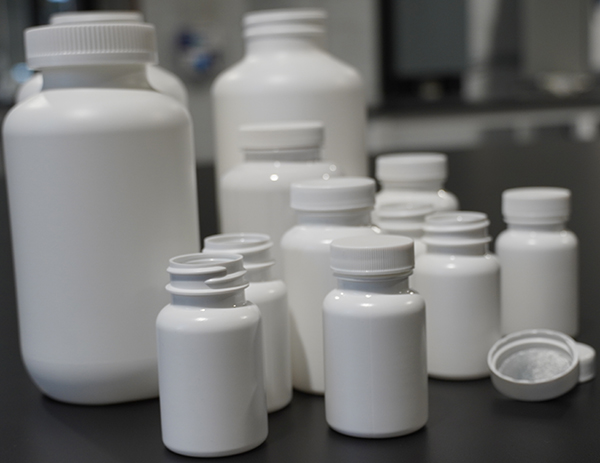As we have discussed in numerous articles, the USP requirements for package system qualification testing have become more complex over the past decade. A simple review of USP <671> permeation testing highlights this fact. Just a few short years ago, the USP <671> chapter referenced three basic permeation (MVTR- moisture vapor transmission rate) test methods while today there are eight. The selection of the most applicable method to your specific package system is critical to ensuring that qualification requirements are met.

To the USP’s credit, on December 1, 2020, General Chapter <1671> was revised to help clarify some of the recent changes and applications of newer test methods. Titled “The Application of Moisture Vapor Transmission Rates for Solid Oral Dosage Forms (SODF) in Plastic Packaging Systems”, the objective of this document is to provide guidance on the correct selection of the USP <671> permeation test method for your specific package system. The call to action, if you are intending to qualify a SODF plastic package system, is to take the time to read this chapter so that you are better informed when working to meeting the regulatory requirements. This article will highlight and summarize some of the key concepts of the USP <1671> general chapter.
Due to potential instability of drug products due to moisture uptake during storage, moisture barrier properties must be characterized to show that the MVTR performance of the container system is adequate to protect the SODF product from moisture uptake. The new and expanded USP <671> test methods are designed to provide MVTR values that are more sensitive and precise than previous methods and enable differentiation across various package system and materials.
It is important to understand that the scope of the USP <1671> general chapter is very specific to select USP <671> test methods. The chapter is only relevant to SODF products and the only USP <671> testing referenced includes Methods One, Two and Three (desiccant methods) and Method Four which is a test that uses water in place of desiccant. The guidelines provided describe the most effective approach for comparison of two package systems – if you are working to replace package A for a new package B, this scenario and how best to compare MVTR testing and reporting is outlined. In addition, other key aspects of the USP <1671> chapter cover the definition of the upper limits of MVTR for a SDOF, enable comparison of a desiccant method to a water use method, and explain an effective approach on how best to leverage MVTR data thus helping you to prevent additional stability studies when changing or updating package systems.
 It is important to understand that while <1671> is written with plastic packaging systems in mind, general concepts can be applied to all types of package configurations, including glass and foil where relevant. The most common packaging materials for SODF product are typically plastic bottles or blister cards that are constructed of typically PVDC and a sealed foil. Common plastic materials used in SODF package systems include cyclic olefins, polyethylene (PE), polyethylene terephthalate (PET), polyethylene terephthalate G (PETG), polypropylene (PP), and polyvinyl chloride (PVC). The guidelines provided in the USP <1671> chapter, in conjunction with the USP <671> test methods referenced, enable effective MVTR testing for these materials.
It is important to understand that while <1671> is written with plastic packaging systems in mind, general concepts can be applied to all types of package configurations, including glass and foil where relevant. The most common packaging materials for SODF product are typically plastic bottles or blister cards that are constructed of typically PVDC and a sealed foil. Common plastic materials used in SODF package systems include cyclic olefins, polyethylene (PE), polyethylene terephthalate (PET), polyethylene terephthalate G (PETG), polypropylene (PP), and polyvinyl chloride (PVC). The guidelines provided in the USP <1671> chapter, in conjunction with the USP <671> test methods referenced, enable effective MVTR testing for these materials.
The chapter outlines and discusses the use of USP <671> Method Four – water filled method – in place of the traditional desiccant methods. There are number of pros and cons to be considered when determining the use of this specific method. A review of the USP <1671> chapter will highlight these in more detail as the key component to understand is the effective internal relative humidity (RH) of the package system. Another key factor that may be viewed in the “con” category, centers on the potential difficulty in sealing a blister card that has each cavity filed with water. A thorough review of the Method Four steps is imperative if you are considering using this approach. The ability to meet the sample preparation steps needed is crucial.
Regardless of the USP <671> method to be use, understanding the inherent barrier properties of your materials is another critical component that must be considered. This is a drastic change from days past. The MVTR characteristics of all plastic materials are much better understood and classified today. Identifying materials based upon their MVTR characteristics – low barrier and high barrier classifications – is a needed starting point. The USP <1671> chapter is an excellent source for this objective as a number of tables are included that provide sample types (example: 7.5 mil PVC, 325ml HDPE, etc…) and their expected average MVTR. This type of information can be used as a guide in selection of materials and as a source of setting expectations when testing is undertaken.
Not all of the USP <1671> key points and concepts are covered in this brief article, But, as stated in the opening paragraph, the main objective is to inform relevant parties that specific USP general chapter exists and can be a valuable tool in helping you define the most optimal method for your USP <671> testing. Understanding that demonstrating MVTR data is a critical control step as part of the package system qualification process is step one. Developing a program that enables and proves the container system to provide MVTR protection on a day-to-day basis is step two. With so many more factors now required to be considered, it is imperative that you are more educated about all the variables that go into this type of testing.
Future articles specific to USP <1671> will focus on other key aspects of this general chapter to include a more thorough review of the water filled methods, key concepts and points specific to equivalency testing and the repackaging of SODF products from one container system to another.

